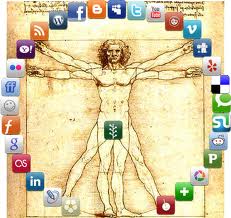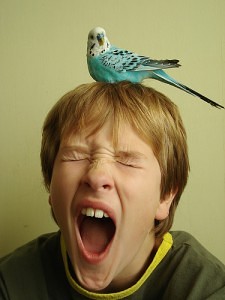![]() At Social Slam (yes, there was a bunch of blogging inspiration at this conference) April 13, 2011 sponsored by the Knoxville Social Media Club, there was a lot of chat about an avatar and what it should be. I suggested during a panel presentation that your avatar should not be a dog, a baby, an animation, or a corporate logo.
At Social Slam (yes, there was a bunch of blogging inspiration at this conference) April 13, 2011 sponsored by the Knoxville Social Media Club, there was a lot of chat about an avatar and what it should be. I suggested during a panel presentation that your avatar should not be a dog, a baby, an animation, or a corporate logo.
Because social media is social, and you’re building a network, it’s important to put on a face (I prefer happy, but you may not). People you tweet with especially want to identify with a person and connect with a familiar face. When you humanize your Twitter brand, you create a relationship with your followers; Tweeps are more inclined to follow you back and engage.
If you’re not tracking with me yet, an avatar is the image you use to identify your Twitter account, your Open ID, your comments, etc. You can register the image you prefer at Gravatar.com and it will soon populate when you comment on other blogs via Disqus, LiveFyre, and elsewhere.
We recently gave a lot of grief to Neicole Crepeau who for the longest time (perhaps a year) had a line drawing of her face. When she finally put up a photo of herself as a test, I tweeted it loudly and clearly to everyone “Neicole has a photo, Neicole has a photo, nanna, nanna boo boo.” (She accused me of never sleeping.) Now that I know what Neicole looks like, I feel more connected to her.
During Social Slam, a question from the audience was posed to our panel of Trey Pennington, Anne Deeter Gallaher and me (we spoke about communicating value about social media to the C-suite). What should people who team tweet for a corporate account for which the avatar is a logo do to identify themselves when they are tweeting? Adding initials within a tweet is a helpful solution; if it’s possible to use a symbol with initials or first name as a signature in a corporate tweet, that may also work.
When I arrived at the hotel in Knoxville to check in, someone in the lobby said “you look really familiar.” It wasn’t a pick up line, was it Billy Mitchell? When I suggested Twitter, he recognized me. What was cool is that I also picked out other people during a reception from having seen their avatar in my stream.
When you look like your avatar, that’s a good thing. It creates ‘raderie, it personifies you, it causes reaction in people, and it’s part of creating a professional brand. If you aren’t sure whether your avatar is a good one, take a poll, but be prepared when Tweeps are brutally honest; after all, you asked!









